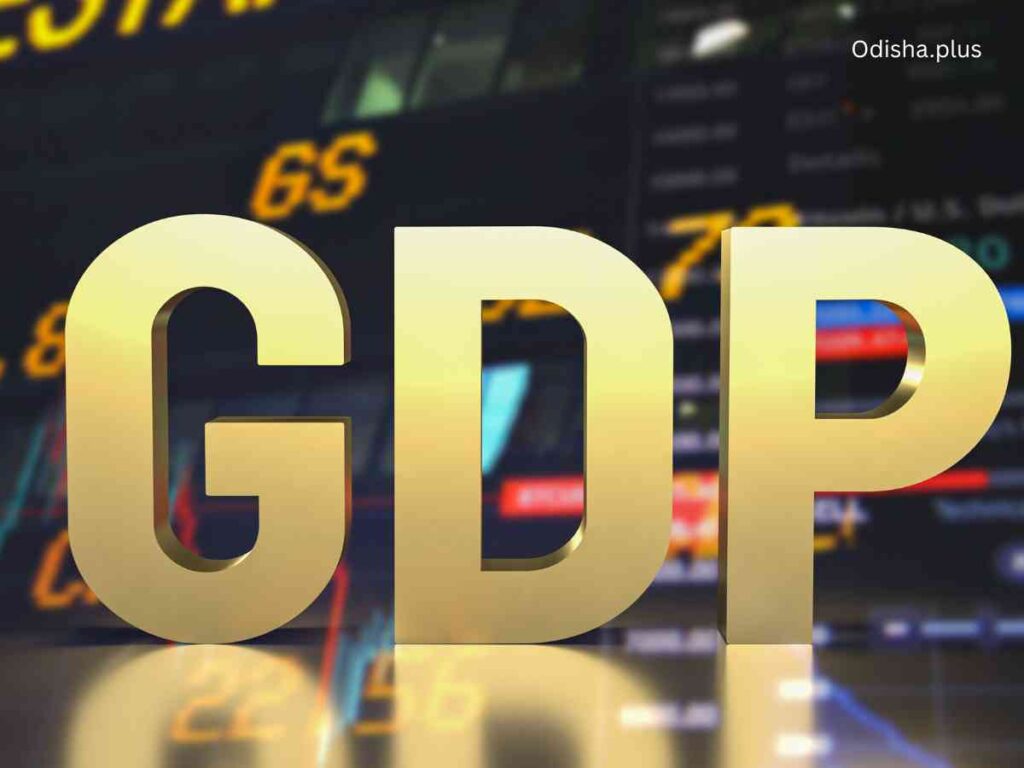India is steadily progressing toward its $5 trillion economy goal, driven by growth in key sectors and supportive government policies despite global and domestic challenges
Raghunath Mahapatra

With an ambitious vision to transform the country into a global economic powerhouse that creates more jobs, raises incomes, and improves everyday life for its people, in the year 2019, the government of India (GOI) laid out a bold dream of turning India into a $5 trillion economy by 2025. At that time, India’s economy was valued at around $2.94 trillion, and the country had already achieved the status of the fastest-growing economy in the world. However, the target of a 5 trillion dollar economy by 2025 seemed like an unprecedented dream and a highly optimistic and unreachable goal for many experts at the time. The Trillion-dollar club is an unofficial classification of the major economies of the world which has a gross domestic product (nominal GDP) of more than US$1 trillion per year.
As per the International Monetary Fund (IMF) estimation, hitting the target of a 5 trillion dollar economy needs a growth rate of around 8–9% every year. But the minimum expected GDP growth rate, even if in FY26 (as per the economic survey tabled in Parliament by the Union Finance Minister), is only 6.3%, and adjusting for the inflation rate, the real GDP growth could be as low as 5.7% this year. The “Trading Economics” has predicted India’s GDP to be only around $3.781 trillion in 2025, while the earlier IMF prediction was $4.340 trillion this year. The country’s dream to grow its economy to $5 trillion and beyond depends on how it manages the exchange rate of its currency against the US dollar while retaining the current GDP growth agenda.
It’s reported that the Rupee has depreciated about 3% in 2024, making the dollar stronger than the Indian currency. A strong dollar affects the value of imports, especially crude oil, which accounts for nearly 25% of our gross import bill, and this huge expenditure carries a chain effect on user industries. This appears to be the biggest challenge before the economy and government this year and for the coming years.
There is no doubt that the country’s economy, despite various national and international setbacks, is on a growth path. The Indian economy in 2025, by more than doubling its size, has outpaced all the nations in the G7, the G20, and the BRICS of the economy. The agriculture sector is projected to grow by 3.8%, while the industry sector is expected to grow by 6.2%. The services sector, a major contributor to India’s GDP, also continues to be a key growth driver. The government’s focus on infrastructure development through initiatives like the ‘Gati Shakti plan’, increasing the investment in digital transformation (including expanding 4G connectivity in all villages), and various policy initiatives such as ‘Make in India’ may lead to a further boost to the economy of the country.
As per the latest data from the International Monetary Fund (IMF), the country shows a staggering 105% growth in the recent past. The growth rate has outpaced many major economies like China (76%), the USA (66%), Germany (44%), France (38%), and the UK (28%). India is on the cusp of overtaking Japan (GDP at $4.4 trillion) as the fourth-largest economy in the world by the third quarter of 2025. It’s also expected that India will surpass Germany (the third-largest economy globally) by the second quarter of 2027. Germany’s GDP currently stands at $4.9 trillion. And it’s also predicted that breaking into the top two places will take India a little over two decades at its current rate of growth.
The growth trajectory of the country in the recent past is also quite phenomenal. While the country took 60 years for its GDP to reach the first trillion-dollar mark (in 2007), on the other hand, from $1 trillion to $2 trillion it took 7 years (in 2014). Further, despite the onset of COVID-19 (which had stalled the world economy), India reached the $3 trillion mark in 2021, and the journey from $3 trillion to $4 trillion took just 4 years. Should the progression continue the way it is, the country is poised to add a trillion dollars to its GDP every 1.5 years, and could likely become a $10 trillion economy by the end of 2032.
Despite some setbacks, it’s said that India’s economic trajectory has been nothing short of remarkable. Morgan Stanley’s report claims, “Macro-stability should remain in the comfort range, providing flexibility to policymakers.” Going forward, the country’s consumption recovery is expected to be broad-based as the income tax cuts propel urban demand, which will support the buoyant trend in rural consumption. Within investments, public and household capex drove growth, while private corporate capex recovered gradually. The strength in services exports bodes well for the labour market outlook, with moderating inflation likely to improve purchasing power. Domestic demand may emerge as the key driver of growth, bolstered by policy support on the monetary and fiscal front.
Morgan Stanley expects inflation to be 4.3% year-on-year in FY2026- 27, which is lower than 4.9% in FY2025. On the monetary policy front, the Reserve Bank of India (RBI) is easing across all its levers: rates, liquidity, and regulations. It embarked on a rate-easing cycle in the February policy, and Morgan Stanley expected more cautious rate cuts ahead. Stating that risks to growth stem from external factors, the report says: the most crucial cue will likely be global, including US policy and global growth rates. “A global recession or a near recession will challenge our call and keep the Indian equities off highs in 2025,” it added.
The IMF data also highlighted that the GDP per capita (which measures the average income of a citizen based on the total economic output) is estimated at $11,940 (or 11.94 thousand international dollars in terms of purchasing power parity). This indicates an improvement in individual prosperity and living standards over the years.
In the integrated economic framework of the world, India doesn’t get respite from global turbulences, but with appropriate macroeconomic steps and policy packages, the situation can be tackled to many extent. A comprehensive multi-pronged policy measure and a stimulus that pumps more money into the economy in the form of transfers, production aid, and investment support is highly required to sustain the growth path of the economy.
Fiscal, monetary, and financial market measures targeted at the most vulnerable sectors, the households and businesses, both at domestic and international levels, are the need of the hour. We might miss the originally expected timeline of 2024-2025 to achieve the target of a $5 trillion economy, but by pursuing the correct policy mix, we might get to that milestone very well by 2028-2029 or at least by the end of this decade.
(The writer is a Former Senior Project Associate, HSS Department, IIT Kanpur. Views expressed are personal.)
























